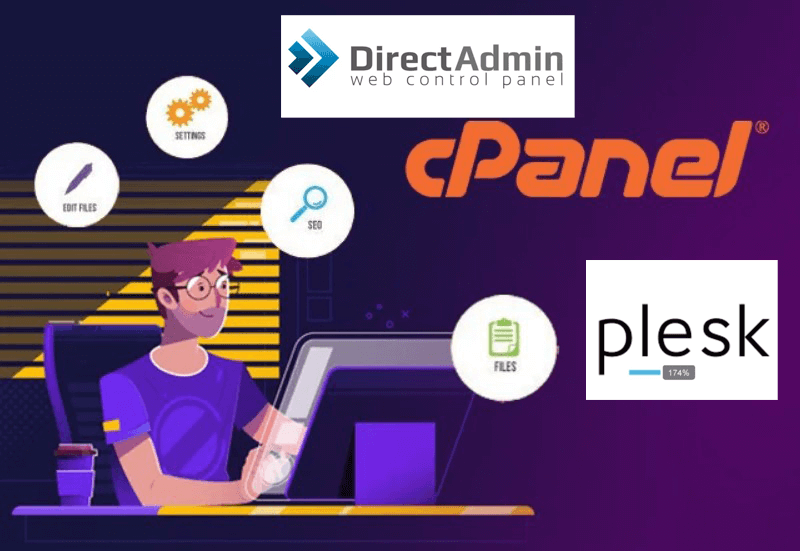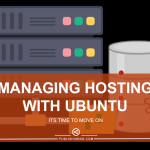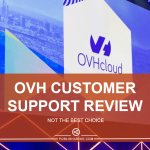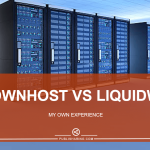As the landscape of web hosting continues to evolve, choosing the right web hosting control panel in 2025 is more critical than ever. Control panels are essential tools that streamline the management of websites, servers, emails, domains, and databases, while providing crucial security features. With several control panels available, each offering its unique strengths and limitations, finding the right one for your needs can be challenging.
In this updated article, we’ll compare some of the top web hosting control panels, highlighting their strengths, weaknesses, and any key innovations or changes that have occurred up to 2025. By understanding the pros and cons of each, you’ll be in a better position to choose the right control panel for your website management needs.
cPanel/WHM in 2025: Still the King of Web Hosting Control Panels?
cPanel/WHM has been the industry leader for many years, and in 2025, it continues to dominate. cPanel is designed primarily for managing individual websites, while Web Host Manager (WHM) is more suitable for managing multiple sites on a server, making it the go-to option for resellers and hosting providers.
Pros
- Extensive Feature Set: cPanel remains one of the most feature-rich control panels on the market. You can easily manage websites, email accounts, databases, DNS settings, FTP accounts, and more, all from a well-organized interface.
- User-Friendly: cPanel’s intuitive design has improved over the years, making it even easier for beginners to navigate. In 2025, cPanel features a more modernized interface, with better tools for managing multiple domains and services efficiently.
- Security Enhancements: cPanel/WHM has always prioritized security, and by 2025, it includes advanced features like integrated firewalls, two-factor authentication, and support for the latest SSL/TLS protocols, ensuring strong protection for hosted websites.
- Wide Compatibility: cPanel is compatible with many web hosting providers and platforms, offering flexibility across various environments.
- Active Community and Support: With millions of users globally, cPanel has a robust support ecosystem. In 2025, its community forums, official documentation, and third-party tutorials have grown, offering ample resources for users at all levels.
Cons
- High License Costs: One of the most significant downsides of cPanel/WHM is its pricing. Over the years, license fees have risen, making it a costlier option compared to other control panels, especially for small businesses or individuals running multiple websites.
- Resource Intensive: cPanel’s vast features can come at the cost of server resources. Although newer versions have optimized performance, it can still be more resource-heavy compared to lightweight alternatives like DirectAdmin.
- Overwhelming for Beginners: While cPanel has an intuitive interface, the sheer number of features can be overwhelming for those who are just getting started. Many users may not need all the advanced tools, leading to a steeper learning curve.
Plesk in 2025: The All-in-One Control Panel for Cross-Platform Hosting
Plesk is another long-standing player in the hosting control panel market, known for its versatility and ease of use. As of 2025, Plesk continues to cater to a broad audience by supporting both Windows and Linux environments, making it a popular choice for users who need cross-platform support.
Pros
- Cross-Platform Compatibility: Plesk is one of the few control panels that works seamlessly on both Linux and Windows servers, providing flexibility for web hosts and users alike.
- Clean Interface: In 2025, Plesk has refined its already user-friendly interface, focusing on simplicity and ease of use. Its design is minimalistic but efficient, catering to both novice and advanced users.
- Support for Popular CMS Platforms: Plesk excels in CMS integrations, especially with WordPress, Joomla, and Drupal. Its WordPress Toolkit remains a standout feature in 2025, allowing for effortless management of WordPress sites, with options for automatic updates, security enhancements, and cloning.
- Extensive Extensions: Plesk offers a wide variety of extensions through its marketplace, allowing users to extend the panel’s functionality. Whether it’s adding enhanced security features, SEO tools, or web development aids, Plesk’s marketplace continues to grow.
- Cost-Effective Options: Plesk offers multiple pricing tiers, including a free version for smaller websites, making it an appealing choice for users on a budget.
Cons
- Premium Features Cost Extra: While Plesk’s base version offers solid functionality, many advanced features (especially those related to security or performance optimization) are locked behind paid extensions or higher-tier plans.
- Not as Extensive as cPanel: Although Plesk is feature-rich, it doesn’t quite match the level of depth and customization that cPanel offers, particularly for advanced users or those managing larger-scale hosting environments.
- Limited Windows Hosting Options: While Plesk does support Windows, its Windows hosting environment isn’t as developed as its Linux counterpart. Certain advanced features may lag behind on Windows-based servers.
DirectAdmin in 2025: Lightweight and Cost-Effective
DirectAdmin has become a popular alternative to cPanel due to its lightweight nature, ease of use, and lower cost. As of 2025, DirectAdmin continues to be favored by those looking for a simple yet powerful control panel that doesn’t overwhelm users or servers with unnecessary features.
Pros
- Simple and Easy to Use: DirectAdmin is known for its clean and straightforward interface. Its simplicity is one of its biggest selling points, allowing even beginners to manage websites without confusion.
- Lightweight Performance: Unlike cPanel, DirectAdmin is less resource-intensive, making it an excellent choice for smaller servers or websites that don’t require many advanced features.
- Cost-Effective: DirectAdmin offers a more affordable pricing structure, especially appealing to individuals and small businesses that need to control costs.
- Stable and Secure: DirectAdmin has made strides in security and stability, offering regular updates and robust security features in 2025. It’s a solid choice for those looking for a lightweight, reliable option.
- Multiple Skin Options: DirectAdmin offers different skins and customizable layouts, allowing users to tailor the interface to their preferences.
Cons
- Limited Features: While its simplicity is a strength, it’s also a limitation. DirectAdmin doesn’t offer the same level of advanced features as cPanel or Plesk, making it less suitable for users with more complex needs.
- Customization Challenges: Although DirectAdmin has some customization options, it lacks the depth and flexibility that other control panels offer. Users looking to heavily customize their environment might find it restrictive.
Virtualmin in 2025: Open-Source Power for Advanced Users
Virtualmin has grown into one of the leading open-source control panels for managing virtual servers. It’s designed for advanced users, developers, and hosting providers who need to manage multiple virtual hosts on a single machine. In 2025, Virtualmin remains a powerful solution for technical users who are comfortable with customization and server management.
Pros
- Open-Source and Customizable: Virtualmin is an open-source control panel, allowing for deep customization and modification. Advanced users can tailor it to their specific needs, making it highly flexible.
- Virtual Server Management: Virtualmin excels at managing multiple virtual servers on one physical machine, making it an ideal solution for hosting providers and businesses that host multiple websites.
- Cost-Effective: As an open-source solution, Virtualmin is free to use, although there is a premium version (Virtualmin Pro) for those who need additional features.
- Wide Linux Distribution Support: Virtualmin supports a broad range of Linux distributions, offering flexibility for various hosting environments.
- Automation Tools: In 2025, Virtualmin continues to offer excellent automation tools for server management, including backups, software updates, and security patches.
Cons
- Steep Learning Curve: Virtualmin is not for the faint of heart. Its interface, while functional, is less intuitive than cPanel or Plesk, and new users may struggle to understand its full capabilities.
- Limited Documentation and Support: While Virtualmin has an active community, its documentation and support options lag behind those of proprietary control panels like cPanel or Plesk.
- Primarily for Linux Users: Virtualmin’s support for Windows is limited, making it a better option for users running Linux-based servers.
CyberPanel in 2025: A New Player Focused on LiteSpeed and OpenLiteSpeed Servers
In recent years, CyberPanel has emerged as a rising star in the world of control panels, particularly due to its tight integration with LiteSpeed and OpenLiteSpeed web servers. As of 2025, it remains a popular choice for users who want a control panel specifically optimized for high-performance hosting on LiteSpeed.
Pros
- Optimized for LiteSpeed: CyberPanel is specifically designed for LiteSpeed and OpenLiteSpeed servers, making it an excellent choice for users looking to take full advantage of these high-performance web servers.
- Free and Open-Source: CyberPanel offers a free version with a robust feature set, making it a highly cost-effective choice for individuals or small businesses.
- Modern Interface: The user interface is sleek and modern, with easy access to features like one-click WordPress installations, SSL management, and server optimization tools.
- Built-in Caching and Optimization: CyberPanel integrates LiteSpeed Cache, a popular caching solution that significantly enhances website performance, making it particularly suitable for eCommerce and high-traffic sites.
Cons
- Limited to LiteSpeed Users: While CyberPanel is optimized for LiteSpeed servers, it may not be the best option for
- users who are using Apache or NGINX web servers. Although it supports those as well, the performance benefits are largely geared toward LiteSpeed, so it may not be as attractive to users on other server types.
- Less Mature Than Competitors: Compared to long-established control panels like cPanel and Plesk, CyberPanel is relatively new. While it has grown rapidly, its ecosystem of plugins, community support, and third-party tools isn’t as extensive as older options.
- Support and Documentation: Although CyberPanel has an active community, its official support and documentation are not as comprehensive as cPanel or Plesk, which can make troubleshooting more difficult for less experienced users.
ISPConfig in 2025: An Open-Source, Multi-Server Management Solution
ISPConfig is another open-source control panel that has gained popularity among hosting providers and developers. It’s designed to manage multiple servers from a single interface, making it a great choice for users who need to scale their web hosting infrastructure across multiple machines.
Pros
- Multi-Server Management: ISPConfig excels at managing multiple servers from a single control panel, offering flexibility for businesses that operate at scale or manage many sites across different servers.
- Open-Source and Free: Like Virtualmin, ISPConfig is an open-source control panel that is free to use, making it an appealing option for those looking to minimize costs while maintaining advanced server management capabilities.
- Modular Design: ISPConfig’s modular approach allows users to install only the features they need, optimizing server performance by avoiding unnecessary bloat.
- Extensive Support for Different Services: ISPConfig supports various services, including web hosting (Apache, NGINX), email (Postfix, Dovecot), DNS, and virtualization, providing a comprehensive solution for server management.
Cons
- Challenging for Beginners: Like other open-source control panels, ISPConfig can be difficult for users who are not experienced with server management. Its interface is less polished and intuitive than commercial options like Plesk or cPanel, resulting in a steep learning curve.
- Limited Commercial Support: While there’s a community behind ISPConfig, official support is limited unless you opt for paid options, which may not be as readily available as with other control panels.
- Documentation Gaps: The official documentation is improving but remains somewhat limited compared to proprietary panels, which can pose challenges for new users or those troubleshooting complex configurations.
Key Innovations in Web Hosting Control Panels for 2025
As web hosting technology advances, control panels have adapted to meet the increasing demand for speed, security, and ease of use. In 2025, several key trends and innovations are shaping the future of web hosting control panels:
1. AI-Powered Optimization
Many control panels are beginning to integrate AI and machine learning features to improve server performance, automate routine tasks, and enhance security. For instance, AI-driven tools can monitor server load, anticipate potential issues, and optimize configurations automatically to reduce downtime and improve site speed.
2. Stronger Focus on Security
In response to the growing threat landscape, control panels are placing even more emphasis on security. Expect more comprehensive tools for managing firewalls, automatic SSL certificate renewals, two-factor authentication, and integration with services like Cloudflare to defend against DDoS attacks.
3. Integrated DevOps Tools
With more businesses adopting DevOps workflows, some control panels now offer built-in tools to help with version control, continuous integration/continuous deployment (CI/CD), and container management (e.g., Docker support). These tools make it easier for developers to deploy and manage applications directly from the control panel without needing additional software.
4. Enhanced Cloud Hosting Features
As cloud hosting becomes the norm, control panels are evolving to integrate more seamlessly with cloud infrastructure providers like AWS, Google Cloud, and Microsoft Azure. Expect better support for managing scalable, multi-server environments with ease, as well as integrations with cloud-based tools for backups, storage, and scaling.
5. Automation and Simplification
In 2025, control panels are becoming more automated to handle routine tasks like software updates, backups, and server monitoring. By automating these tasks, web administrators can focus more on growing their business rather than managing the technical details of hosting.
How to Choose the Best Web Hosting Control Panel in 2025
Now that we’ve explored some of the top web hosting control panels in 2025, the question remains: how do you choose the right one for your needs? Here are a few critical factors to consider:
1. Your Hosting Environment
The operating system and server type you’re using will heavily influence your control panel choice. For example, if you’re running a Windows-based server, Plesk may be your best option, as it offers strong Windows support. On the other hand, if you’re running a Linux server and want a lightweight option, DirectAdmin or Virtualmin could be ideal.
2. User Experience and Interface
Your level of technical expertise should also guide your decision. If you’re a beginner, you’ll want a control panel with a simple and intuitive interface, such as cPanel or Plesk. If you’re an advanced user or developer looking for customization, open-source control panels like ISPConfig or Virtualmin offer more flexibility but may be harder to use.
3. Features vs. Cost
Many control panels come with a wide range of features, but more features often come with higher costs. Consider whether you need all the advanced options that panels like cPanel or Plesk offer, or if a simpler, cheaper option like DirectAdmin will meet your needs.
4. Security
Security should be a top priority when choosing a control panel. Look for panels that offer built-in security features such as two-factor authentication, advanced firewalls, and automated updates to ensure that your hosting environment is as secure as possible.
5. Scalability
If you’re managing multiple sites or plan to scale your hosting environment, choose a control panel that offers multi-server support, such as ISPConfig or WHM. If your website is growing rapidly, opt for a control panel that supports cloud-based scaling, like Plesk with its cloud integration tools.
6. Support and Community
If you’re not confident in managing your hosting environment on your own, choose a control panel with strong support options. cPanel and Plesk offer extensive documentation, forums, and customer support. Open-source options like Virtualmin and ISPConfig, while powerful, may have more limited support and rely on community-based forums.
Conclusion
In 2025, the web hosting control panel you choose can make or break your website management experience. Whether you need an all-in-one solution like cPanel/WHM, a cross-platform panel like Plesk, a lightweight alternative like DirectAdmin, or the flexibility of an open-source platform like Virtualmin or ISPConfig, the key is to align the panel’s strengths with your specific requirements.
As web technologies continue to advance, control panels are keeping pace, offering new features to enhance performance, security, and ease of use. By evaluating your hosting environment, technical expertise, and the level of control you need, you can confidently select the best control panel for your website or hosting business in 2025.
Ultimately, the right control panel will empower you to manage your website with efficiency, flexibility, and peace of mind—whether you’re a beginner launching a single site or an experienced administrator managing multiple virtual servers.








httr
كفو